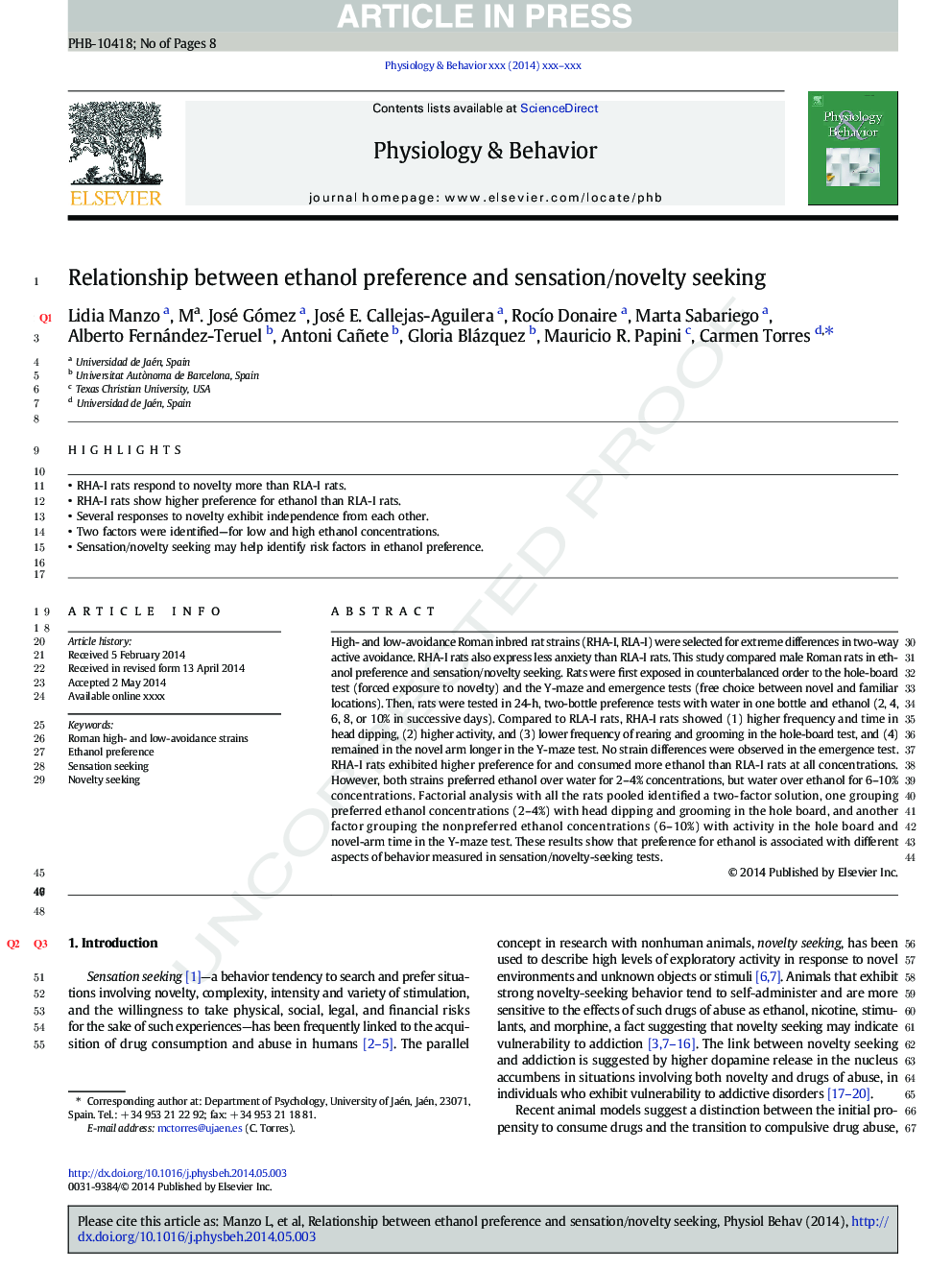| Article ID | Journal | Published Year | Pages | File Type |
|---|---|---|---|---|
| 5924130 | Physiology & Behavior | 2014 | 8 Pages |
Abstract
High- and low-avoidance Roman inbred rat strains (RHA-I, RLA-I) were selected for extreme differences in two-way active avoidance. RHA-I rats also express less anxiety than RLA-I rats. This study compared male Roman rats in ethanol preference and sensation/novelty seeking. Rats were first exposed in counterbalanced order to the hole-board test (forced exposure to novelty) and the Y-maze and emergence tests (free choice between novel and familiar locations). Then, rats were tested in 24-h, two-bottle preference tests with water in one bottle and ethanol (2, 4, 6, 8, or 10% in successive days). Compared to RLA-I rats, RHA-I rats showed (1) higher frequency and time in head dipping, (2) higher activity, and (3) lower frequency of rearing and grooming in the hole-board test, and (4) remained in the novel arm longer in the Y-maze test. No strain differences were observed in the emergence test. RHA-I rats exhibited higher preference for and consumed more ethanol than RLA-I rats at all concentrations. However, both strains preferred ethanol over water for 2-4% concentrations, but water over ethanol for 6-10% concentrations. Factorial analysis with all the rats pooled identified a two-factor solution, one grouping preferred ethanol concentrations (2-4%) with head dipping and grooming in the hole board, and another factor grouping the nonpreferred ethanol concentrations (6-10%) with activity in the hole board and novel-arm time in the Y-maze test. These results show that preference for ethanol is associated with different aspects of behavior measured in sensation/novelty-seeking tests.
Related Topics
Life Sciences
Biochemistry, Genetics and Molecular Biology
Physiology
Authors
Lidia Manzo, Mªa. José Gómez, José E. Callejas-Aguilera, RocÃo Donaire, Marta Sabariego, Alberto Fernández-Teruel, Antoni Cañete, Gloria Blázquez, Mauricio R. Papini, Carmen Torres,
